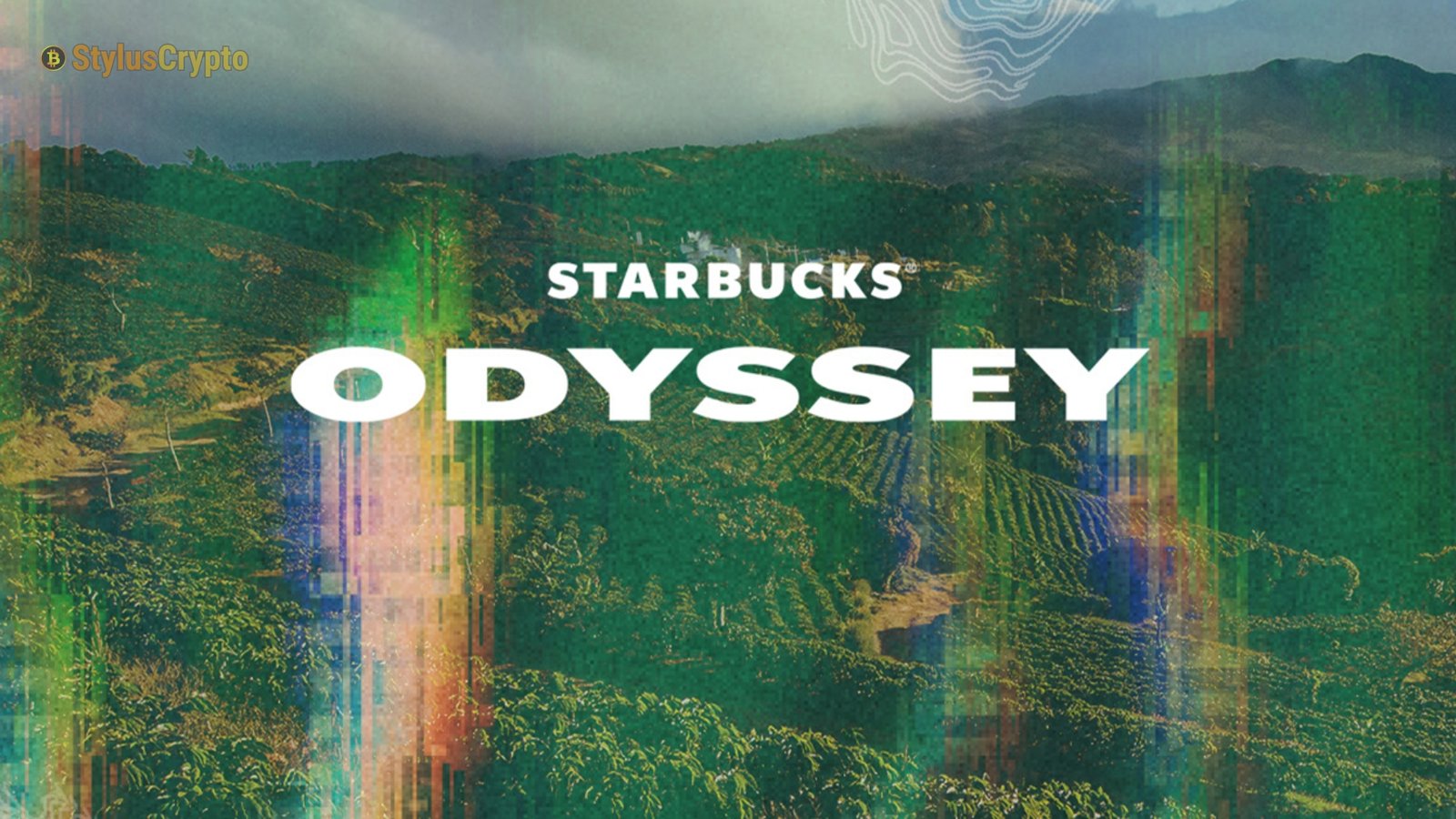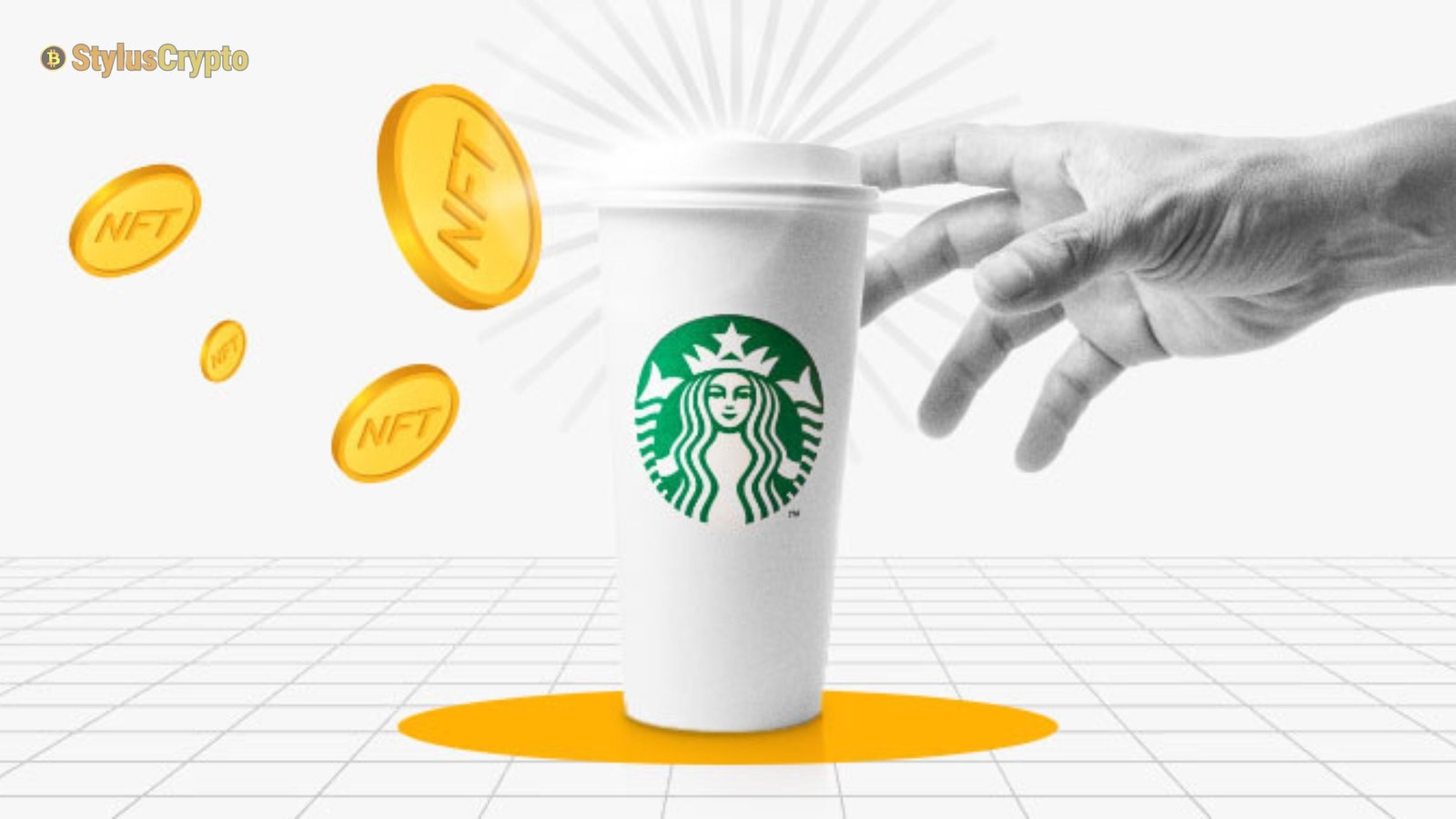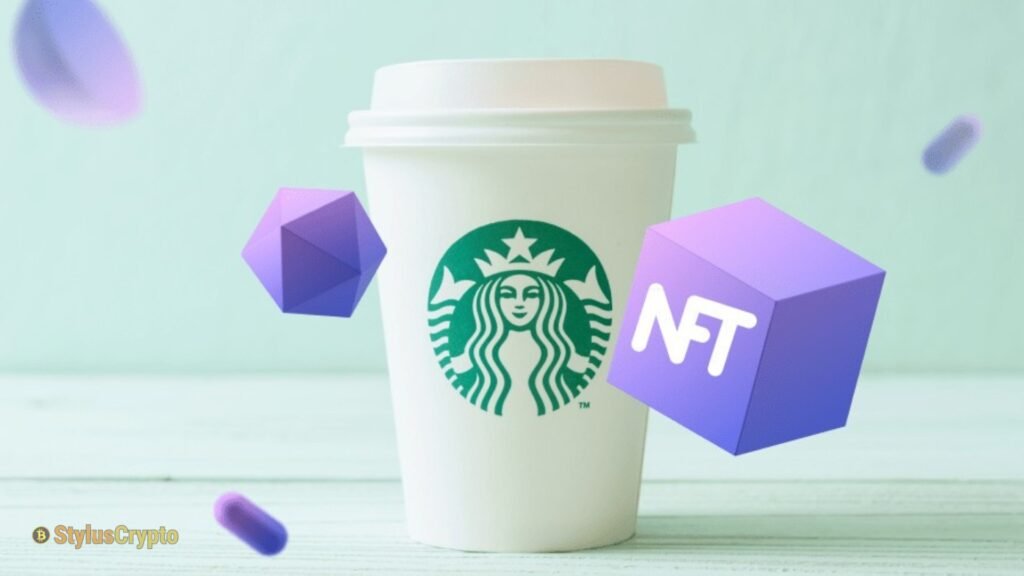Starbucks NFTs: Integrating blockchain technology with well-known businesses is becoming a real possibility in today’s rapidly developing digital ecosystem. Starbucks’ foray into Non-Fungible Tokens (NFTs) is among the more fascinating instances of this trend. By entering the NFT market, Starbucks is rethinking consumer involvement, devotion, and the brand experience while also providing collectible digital art.
The Birth of Starbucks NFTs
Starbucks entered the NFT space by launching its “Starbucks Odyssey” platform in 2022. This platform represents a significant milestone in Starbucks’ digital innovation strategy, combining its existing loyalty program, Starbucks Rewards, with blockchain technology. Starbucks Odyssey allows customers to earn, purchase, and trade unique digital assets, all backed by NFTs. These assets, called “Stamps,” offer more than just a collectible experience; they also come with various perks and experiences, enhancing the overall customer journey.
The introduction of NFTs by Starbucks is not just a trend-chasing move. It aligns with the brand’s history of leveraging technology to stay ahead of the curve. Starbucks has been a pioneer in mobile payments, with its app becoming one of the most widely used payment methods in the U.S. The company’s adoption of NFTs is a natural extension of its commitment to innovation and customer engagement.
How Starbucks Odyssey Works
Starbucks Odyssey is seamlessly integrated into the existing Starbucks Rewards program. Members can participate in various “Journeys” interactive activities to engage customers with the brand. These journeys can involve games, quizzes, or learning modules about Starbucks’ coffee and sustainability practices. Upon completing these activities, users earn Stamps in the form of NFTs.
Each Stamp is unique and tradable, adding an element of gamification and collectibility to the Starbucks experience. Some Stamps are more common, while others are rare or exclusive, depending on the difficulty of the journey or the specific promotion. The rarer the Stamp, the higher its potential value in the secondary market.
Stamps are stored in a user’s digital wallet and are accessible via the Starbucks app. These NFTs can be traded on secondary markets, allowing users to buy, sell, or exchange them with other collectors. The ability to trade Stamps introduces a new layer of interaction among Starbucks customers, fostering a community of enthusiasts who share a common interest in the brand.
In addition to their collectible nature, Stamps offer real-world rewards. Depending on the type and number of Stamps users hold, they can unlock exclusive benefits, such as virtual classes, special events, or even trips to Starbucks’ coffee farms in Costa Rica. This blending of digital and physical experiences creates a unique value proposition for Starbucks customers, encouraging deeper brand loyalty and engagement.
The Technology Behind Starbucks NFTs
Starbucks Odyssey is built on blockchain technology, ensuring the stamps’ uniqueness, ownership, and transferability. However, unlike many NFT platforms that rely on the energy-intensive Ethereum network, Starbucks has chosen a more eco-friendly approach. The company partnered with Polygon, a layer two scaling solution on Ethereum, significantly reducing the environmental impact of minting and trading NFTs.
Polygon’s blockchain technology allows Starbucks to offer NFTs with minimal transaction fees and faster processing times, making the experience more user-friendly for customers who may not be familiar with cryptocurrency or blockchain technology. Starbucks’ decision to use Polygon aligns with its broader sustainability goals, ensuring that its digital initiatives do not come at the expense of environmental responsibility.
Starbucks NFTs and the Future of Customer Loyalty
The introduction of Starbucks NFTs through the Odyssey platform marks a shift in how brands approach customer loyalty. Traditional loyalty programs have focused on points and rewards, but Starbucks pushes the boundaries by creating a more immersive and engaging experience. By incorporating NFTs into its loyalty program, Starbucks is tapping into the growing interest in digital collectibles and blockchain technology, particularly among younger, tech-savvy consumers.
Starbucks Odyssey also opens the door to new revenue streams. While the platform’s primary focus is enhancing customer engagement, the ability to buy and sell Stamps on secondary markets adds a financial dimension to the loyalty program. Starbucks could benefit from transaction fees or partnerships with other brands that want to leverage its NFT ecosystem.
Moreover, the Starbucks Odyssey platform sets a precedent for other brands considering similar initiatives. As blockchain technology becomes more mainstream, we can expect more companies to explore NFTs to deepen customer relationships, offer unique experiences, and create new forms of value.
Challenges and Criticisms
Despite the potential benefits, Starbucks’ venture into NFTs is not without challenges. One of the primary concerns is the complexity of the technology. While Starbucks has tried to simplify the process for users, the concept of NFTs and blockchain can still be intimidating for those unfamiliar. Ensuring a smooth and accessible user experience will be crucial for the platform’s success.
Another challenge is the volatility of the NFT market. While some Stamps may increase in value, others might not, leading to potential disappointment among customers who view them as investments. Starbucks will need to manage customer expectations carefully and ensure that the focus remains on the experiential and collectible aspects of the NFTs rather than purely on their monetary value.
Despite Starbucks’ use of the eco-friendly Polygon network, environmental concerns also persist. Critics argue that any form of blockchain technology has an environmental impact, and the growing popularity of NFTs could contribute to increased energy consumption. Starbucks must continue exploring ways to minimize its carbon footprint while expanding its digital initiatives.
Conclusion
Starbucks’ foray into NFTs through the Odyssey platform is a bold and innovative move that reflects the company’s commitment to staying at the forefront of digital technology. By integrating NFTs into its loyalty program, Starbucks is creating a more engaging and rewarding experience for its customers while tapping into the growing interest in digital collectibles.
While there are challenges to overcome, particularly regarding user adoption and environmental impact, Starbucks Odyssey has the potential to set a new standard for customer loyalty programs. As the digital landscape continues to evolve, Starbucks’ NFT initiative could pave the way for other brands to explore similar opportunities, ultimately redefining how companies connect with their customers in the digital age.

